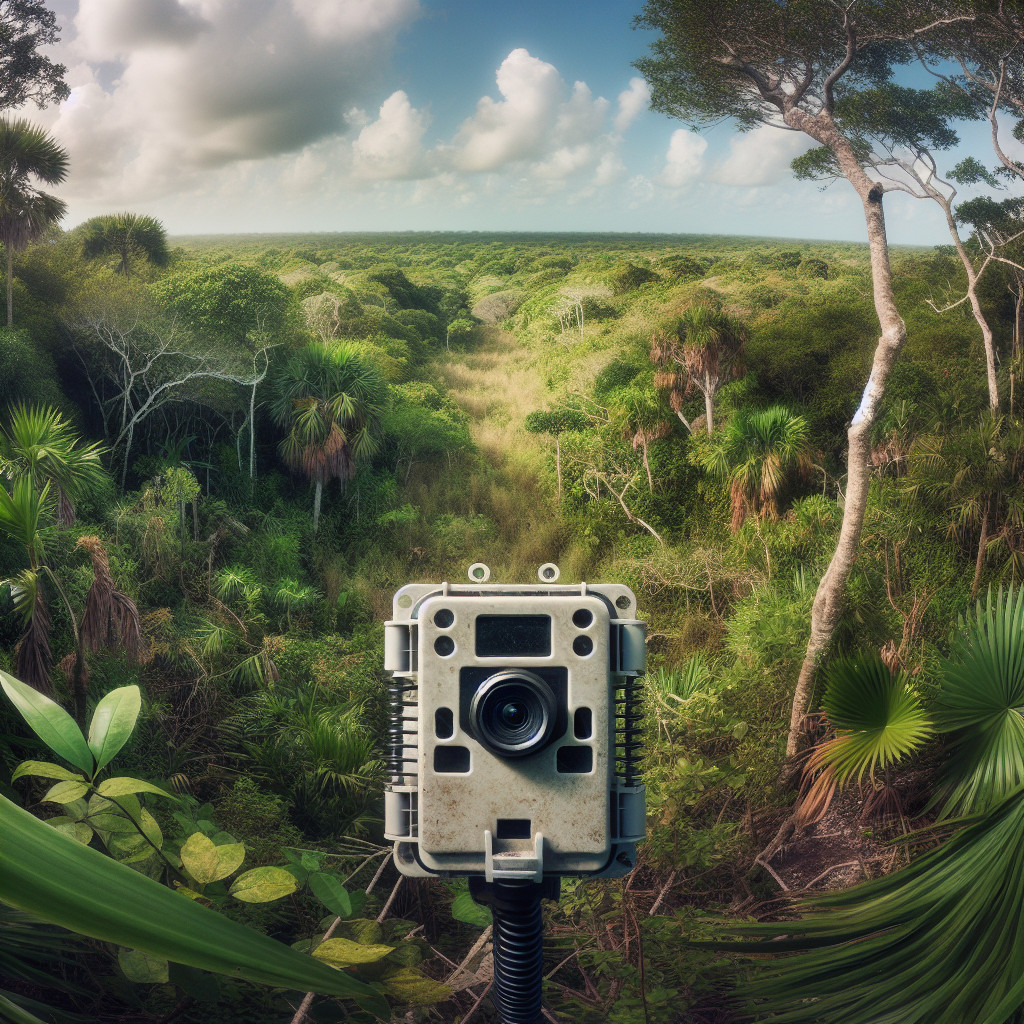The Role of Camera Traps in Tulum’s Wildlife Studies
Tulum, a picturesque coastal town in Mexico’s Yucatán Peninsula, is renowned for its stunning beaches and remarkable Mayan ruins. However, beneath its scenic surface lies a rich tapestry of biodiversity, encompassing various ecosystems, from mangroves to coral reefs. Researchers and conservationists increasingly leverage technology to study Tulum’s wildlife, and camera traps have emerged as a vital tool in this domain.
Understanding Camera Traps: Technology and Functionality
Camera traps are automatic cameras equipped with motion sensors that capture images and videos of wildlife without human presence. These devices are key in non-intrusive wildlife monitoring, allowing scientists to document animal behavior, population dynamics, and ecological interactions. Typically, camera traps are set up in strategic locations based on animal tracks, feeding sites, or known habitats, rendering them particularly effective in studying elusive and nocturnal species.
Biodiversity Assessment
One of the primary roles of camera traps in Tulum’s wildlife studies is biodiversity assessment. Researchers deploy these devices in various habitats to obtain a comprehensive inventory of species present in the area. This method provides crucial data on both common and rare species, including mammals, birds, reptiles, and insects.
For instance, studies have recorded vital information about the presence of species such as the jaguar (Panthera onca), ocelot (Leopardus pardalis), and various species of birds unique to the region. By analyzing images captured over time, researchers can identify population changes and species distributions, helping enforce conservation strategies tailored to the region’s specific needs.
Monitoring Behavior and Ecology
Camera traps offer insights into animal behavior that traditional observation methods often fail to capture. They record spontaneous interactions among species, providing critical data on feeding habits, mating rituals, and territorial behaviors. For example, researchers have been able to document the feeding patterns of raccoons (Procyon lotor) and the mating habits of howler monkeys (Alouatta palliata) in Tulum’s jungles.
Furthermore, camera traps are invaluable for understanding predator-prey dynamics. Data collected can inform researchers about how various species interact, helping to paint a clearer picture of the ecosystem’s health. For instance, observing interactions between apex predators and their prey allows for assessments of ecological balance and the impact of environmental changes.
Conservation Efforts and Community Engagement
As Tulum faces increasing pressures from tourism and development, conservation efforts are paramount. Camera traps play a significant role in these strategies by providing tangible evidence supporting the need for habitat protection. Collaborative projects between researchers and local communities can utilize camera trap data to raise awareness about the importance of protecting local wildlife.
Engaging the local population enhances conservation initiatives, as community members can actively participate in monitoring efforts, contributing to data collection, and running educational campaigns. People seeing images of local species captured by camera traps fosters a sense of pride and responsibility towards preserving Tulum’s wildlife.
Identifying Threats and Managing Human-Wildlife Conflict
Human-wildlife conflict is an emerging issue in areas experiencing rapid development, including Tulum. Camera traps help identify the extent of such conflicts by monitoring animal movements in proximity to urban areas or agricultural lands. For instance, footage can reveal when and where wildlife trespasses on human territories, informing mitigation strategies.
Understanding these patterns allows researchers to devise informed approaches to minimize conflict, such as creating wildlife corridors or implementing educational programs that teach local residents how to coexist with nearby fauna. Data gathered can also assist in understanding poaching trends and illegal wildlife trade, aiding in enforcing protective measures for vulnerable species.
Data Collection and Analysis
The effectiveness of camera traps in wildlife studies is amplified through advanced data analysis techniques. The data collected is often vast and varied, necessitating sophisticated software and AI to process and analyze the information efficiently. This technological integration enables researchers to categorize species, identify individuals through coat patterns or markings, and monitor changes over time.
In recent studies in Tulum, machine learning algorithms have been employed to streamline the analysis, allowing researchers to sift through thousands of images rapidly. Developing an extensive database of species captured on camera traps can significantly contribute to long-term ecological studies, ultimately enriching the overall body of knowledge regarding Tulum’s wildlife.
Partnerships with Research Institutions and NGOs
The proliferation of camera trap initiatives in Tulum has fostered partnerships between local researchers, international universities, and non-governmental organizations (NGOs). Collaborative projects leverage resources, expertise, and funding, enhancing the scope and scale of wildlife monitoring efforts. NGOs focused on conservation are particularly crucial in facilitating these partnerships, providing training and equipment to reinforce local research capacities.
Such collaboration enhances the legitimacy and influence of wildlife studies, promotes knowledge exchange, and fosters innovation in data collection and analysis. These partnerships increase the availability of findings to policymakers, cultivating informed decision-making for conservation strategies in Tulum.
Conclusion of Camera Trap Impact
In summary, camera traps have revolutionized wildlife studies in Tulum, serving as essential tools for biodiversity assessment, behavioral research, and conservation efforts. By embracing advanced technology and fostering community engagement, these systems help preserve Tulum’s rich ecological heritage. As scientists and local communities work in unison, the potential for impactful conservation initiatives becomes increasingly viable, ensuring that Tulum remains a haven for both its inhabitants and the diverse species that call it home.







